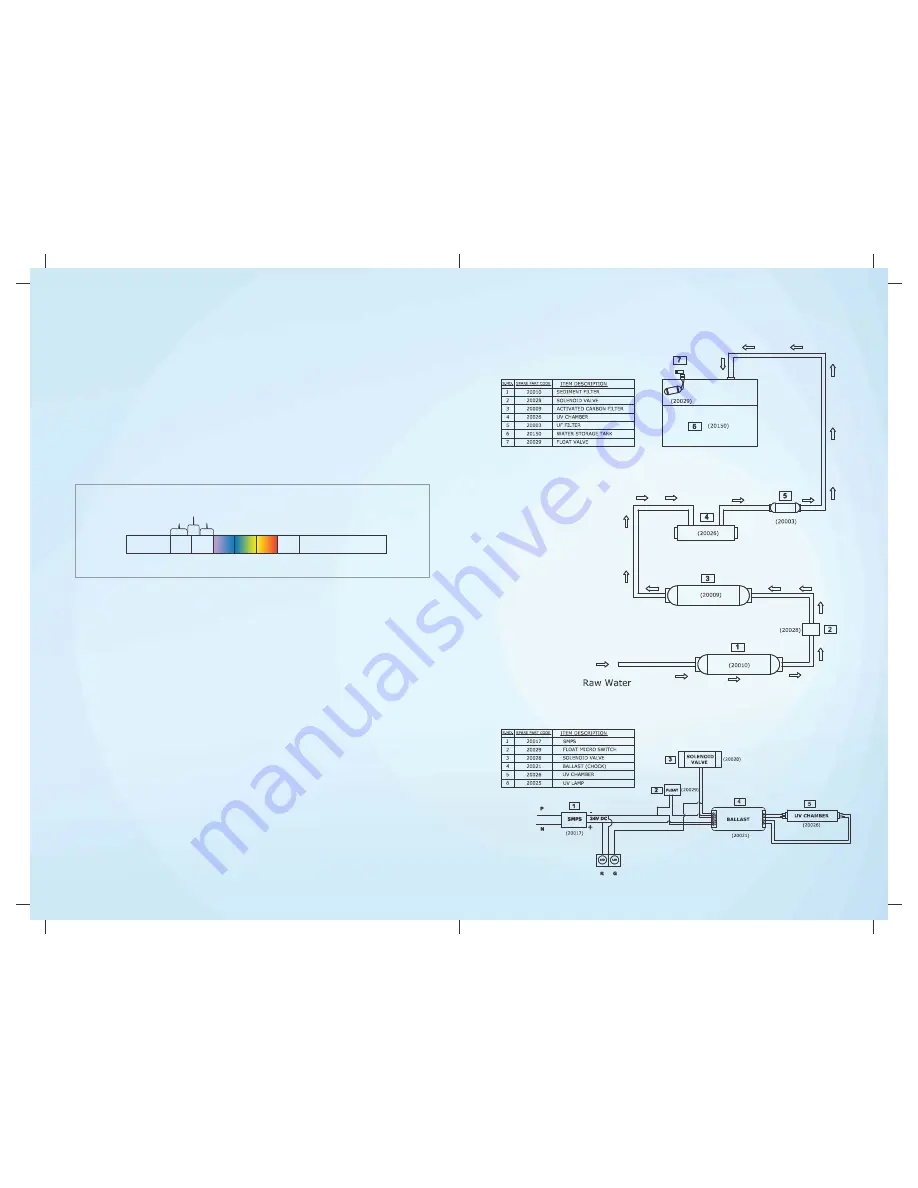
Ultra Violet (UV) rays are the high energy rays having a wavelength shorter than the
visible light. They are called ultra-violet because they are just beyond the violet light
in the spectrum. Technically, ultra-violet light is defined as any wavelength of light
which is shorter than 400 nanometer.
When penetrated into water, the UV radiations are absorbed by the DNA of pathogens.
These UV rays alter the DNA of these pathogens in such a way that they lose the ability to
reproduce, multiply and infect. Thus, they are essentially killed and cannot cause
infection. This process of DNA modification is known as inactivation.
UV Process
700
400
Wavelength(nm)
UVB
280-315
UVA
315-400
UVC
200-280
X-Rays
Ultraviolet
Visible
Infrared
Microwaves Radio
Ultra Filtration is a separation process that uses membranes with pore size of 0.1
micron. The UF membrane has the capacity to reduce colloidal materials including
bacteria and cyst from drinking water. Low applied pressure is therefore sufficient to
achieve high flux rates from an Ultra Filtration membrane.
UF Process
3
Water Flow Diagram
Electrical Circuit Diagram
4
100-300 V AC, 50-60 Hz
























